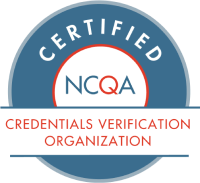Penelope Simonds is a healthcare administration leader with over 15 years experience in billing and credentialing. Throughout her career, she’s seen the billing portion of her work increase efficiency by utilizing electronic methods, but she admits she has seen little change within the credentialing process. In many ways, she says, her own career has typified the problem with credentialing: “It causes me pain, in the beginning, in increments, so it was never my priority.” Since 2011, Penelope has served as the Director of Credentialing Services for Athenahealth, which provides cloud-based services and mobile tools for medical groups and health systems. She is excited that she is finally able to concentrate on credentialing, devoting her expertise to finding efficiency in the notoriously messy and duplicative process.
Credentialing is a loaded term.
Because there is some confusion between terms and different organizations call enrollment and credentialing by the same name, Penelope Simonds was kind enough to take a moment out of her busy schedule to help us understand the difference between Payer Enrollments and Credentialing. “Credentialing is loaded term…it is used to describe a lot of things.” It is used to refer to enrollments, physician credential verifications, and hospital privileges.
To explain the differences between enrollment and physician credentialing, Penelope described their two distinct purposes: Credentialing exists because “providers need to be vetted,” whereas enrollment exists to “link providers to payers, where contracts are already established” because providers need to get paid. Within the realm of credentialing, yet still a distinct process, is hospital privileges. This refers to a provider being given the rights to perform certain procedures and operations within a given hospital.
Where credentialing, hospital privileges, and enrollment overlap is in the data that is needed to launch each process. “It’s a duplicative process,” Penelope said, “a lot of the same data has to be reviewed by a lot of different people.” The problem is not that so many people need to review this provider data; the problem is that “there is no standard process to get that information and to give that information. It’s messy.”
Enrollments and credentialing are extremely time consuming and duplicative processes.
Practices have to gather the necessary data from their providers to get them credentialed and then submit similar data to insurance companies, hospitals, and payers. Because credentialing initiates the gathering of the provider data that will need to be used for enrollments, hospital privileges, billing, as well as provider directories, practices need to manage the way they track and maintain this data, rather than asking for it from the providers over and over again.
What Practices Need to Know about Enrollments
When asked what the top two things practices need to know about enrollments, Penelope stated without hesitation: “There is no standardization.” She quickly followed up with: “It’s a long and painful process.”
Practices may have as many as 15 to 20 different payers, including Medicaid and Medicare. Every payer has a different process and turnaround time, ranging from 30 to 160 days. For example, Medicaid processes enrollments in 60 to 90 days. Medicare generally has the same guidelines, but with great frequency they will request additional information before they process the enrollment application.
Another example of the lack of standardization is the effective date for enrollments: Every organization has a different one. Some organizations use the date the paperwork was submitted as a retroactive effective date, whereas others use the date the paperwork is received or even processed. Therefore, it is important for practices to familiarize themselves with the unique processes of each payer.
A common mistake that Penelope sees practices make is not leaving enough time for each enrollment process, which can cause the practices to incur payer backlogs or have open positions that they can’t fill in a timely manner. In order to avoid these kinds of blocks in workflow which can result in a red bottom line, it is important for practices to realistically take into account how much time each enrollment will take. Practices will need to set up a system to track payers, provider data, and contracts.
If a practice is just getting started, the practice will also need to take into consideration the time it takes to establish contracts with payers, in addition to the time it takes to link their organization to the payer and enroll their providers.
Credentialing Starts the Lifecycle of the Revenue Cycle
Credentialing and enrollments are both necessary processes that need to be understood and embraced by all practice that wish for their providers to see patients and get paid. Like Penelope’s own career trajectory, she hopes more people will stop ignoring these paper-heavy processes and look for solutions.
“It’s funny,” Penelope sighed. “Credentialing starts the lifecycle of the revenue cycle, but it’s been left in the dust.” Because credentialing is a crucial component of healthcare business strategy, the healthcare industry can no longer afford to ignore it. Across the industry, health plans, hospitals and practices are starting to pay attention to the credentialing process, and they are looking for better ways to manage their provider data. For this reason, Penelope is hopeful about the future of credentialing.
Despite the slow-moving and painful nature of both the enrollment and credentialing process, Penelope contends that “it’s exciting to be on the forefront of so much opportunity.” Because progress is being made in the way provider data is being handled and more people in the healthcare industry are finally prioritizing the credentialing process, Penelope believes there is much to look forward to in the credentialing and enrollment processes.
Source: New feed



